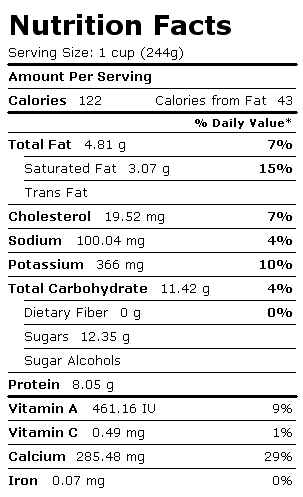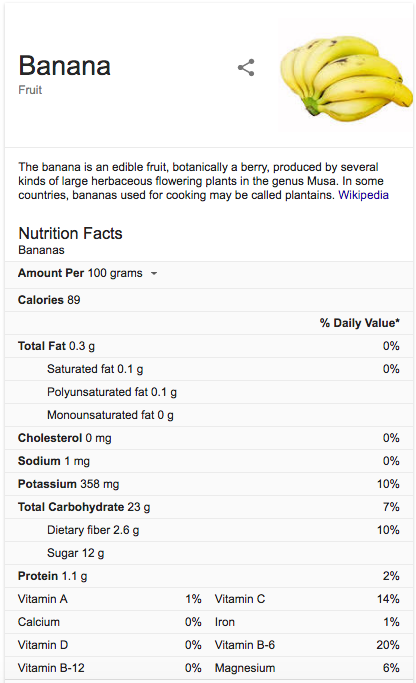Milk Fat
Overview
On the first day of classes we discussed the differences in nutritional facts on the back of products. We found that unlike many other products, milk was the only product that determined its milk fat by the weight, and not the amount of calories in the container.
Below is an example of a container of 2% milk's nutritional facts.

Here we can see that if the milk fat was calculated using the fat calories divided by the total calories we would get . If we were to calculate it by the total fat in grams divided by the total in grams we then get.
In the photo below we can see that a banana does not follow the above rules. It takes the total amount of fat and relates it to the amount of calories in the banana. The result then would be .
Below is an example of a banana's nutritional facts.

Conclusion
In conclusion, we can see how the food industry tries to "trick" people into thinking that milk has hardly any fat. By using the above calculation, we can see that there is actually 35.2% fat in milk, opposed to the 2% it claims.